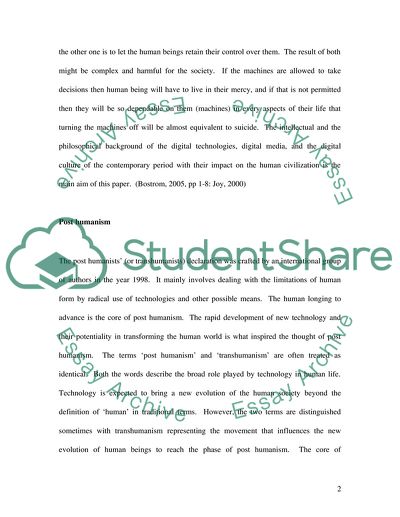Cite this document
(Digital Philosophy: What Is Posthumanism Dissertation, n.d.)
Digital Philosophy: What Is Posthumanism Dissertation. Retrieved from https://studentshare.org/philosophy/1749428-digital-philosophy-what-is-posthumanism-critically-explore-the-strengths-and-weaknesses-of-this-concept-for-understanding-our-current-and-future-relationship-to-technology
Digital Philosophy: What Is Posthumanism Dissertation. Retrieved from https://studentshare.org/philosophy/1749428-digital-philosophy-what-is-posthumanism-critically-explore-the-strengths-and-weaknesses-of-this-concept-for-understanding-our-current-and-future-relationship-to-technology
(Digital Philosophy: What Is Posthumanism Dissertation)
Digital Philosophy: What Is Posthumanism Dissertation. https://studentshare.org/philosophy/1749428-digital-philosophy-what-is-posthumanism-critically-explore-the-strengths-and-weaknesses-of-this-concept-for-understanding-our-current-and-future-relationship-to-technology.
Digital Philosophy: What Is Posthumanism Dissertation. https://studentshare.org/philosophy/1749428-digital-philosophy-what-is-posthumanism-critically-explore-the-strengths-and-weaknesses-of-this-concept-for-understanding-our-current-and-future-relationship-to-technology.
“Digital Philosophy: What Is Posthumanism Dissertation”, n.d. https://studentshare.org/philosophy/1749428-digital-philosophy-what-is-posthumanism-critically-explore-the-strengths-and-weaknesses-of-this-concept-for-understanding-our-current-and-future-relationship-to-technology.


